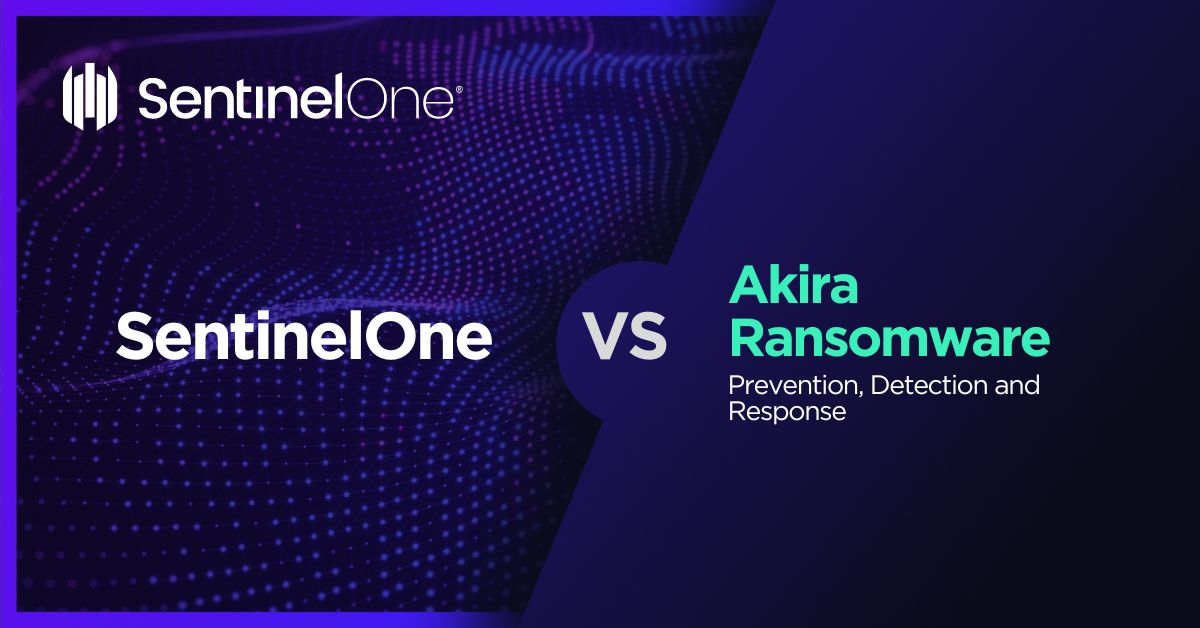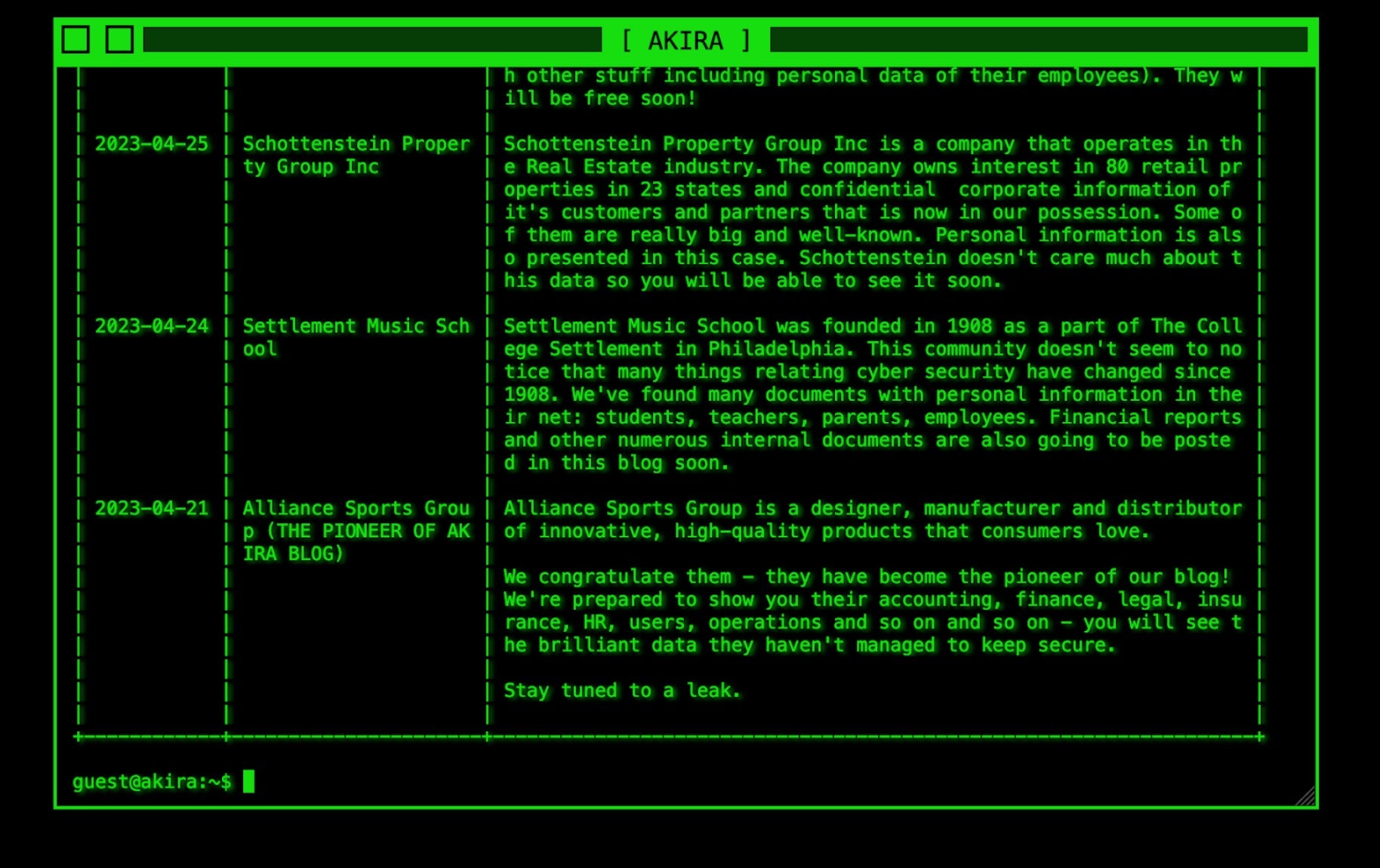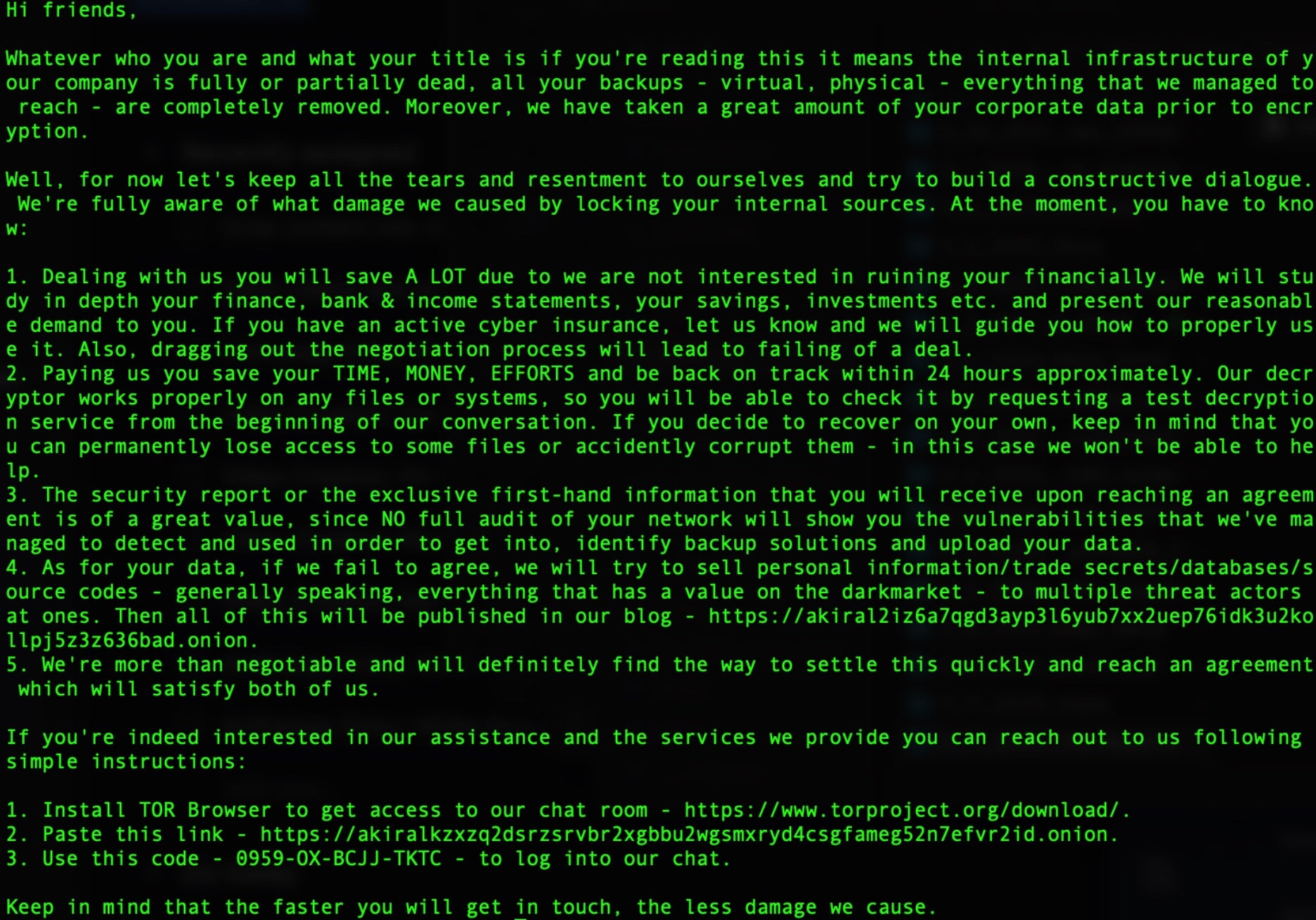Akira Ransomware: In-Depth Analysis, Detection, and Mitigation
What Is Akira Ransomware?
Akira ransomware operations were initiated in March 2023. The actor gained attention due to the ‘retro aesthetic’ applied to their DLS (Data Leak Site) and messaging. Actors behind Akira practice multi-extortion tactics and host a TOR-based (.onion) website where victims are listed along with any stolen data should a victim fail to comply with the ransom demands. Victims are instructed to contact the attacker via their TOR-based portal (.onion) where they enter a unique identifier provided in the ransom note they receive to begin the negotiation process. The group is known to require outrageous ransom payments, reaching hundreds of millions of dollars.
What Does Akira Ransomware Target?
Akira attackers do not discriminate when it comes to victimology outside of targeting large enterprises. As of this writing, educational institutions as well as those in the financial, manufacturing, real estate, and medical industries are all known targets of Akira attackers.
How Does Akira Ransomware Work?
Initial delivery is achieved by exploiting public facing service or applications. Weaknesses in multi-factor authentication (MFA) are often targeted as well as known vulnerabilities in VPN software. Attackers attempt to dump credentials though LSASS dumps, for further lateral movement and privilege escalation where necessary. The group has also been associated with other LOLBins/COTS tools like PCHunter64 or the use of minidumps.
Upon launch, the ransomware payloads will launch PowerShell commands to remove volume shadow copies (VSS). The ransomware appends the .akira extension to all files that are affected by the encryption. In the event that a file is locked by the Windows operating system, the ransomware will attempt to utilize the Windows Restart Manager (WRM) API to address said issues. VSS removal is handled via PowerShell command. The ransomware payloads are also known to contain hard-coded extensions to process for encryption, along with an exclusion list to prevent anything from inhibiting the encryption process. Affected files have a .akira extension added to them.
How to Detect Akira Ransomware
The SentinelOne Singularity XDR Platform can identify and stop any malicious activities and items related to Akira ransomware.
In case you do not have SentinelOne deployed, detecting Akira ransomware requires a combination of technical and operational measures designed to identify and flag suspicious activity on the network. This allows the organization to take appropriate action, and to prevent or mitigate the impact of the ransomware attack.
To detect Akira ransomware without SentinelOne deployed, it is important to take a multi-layered approach, which includes the following steps:
- Use anti-malware software or other security tools capable of detecting and blocking known ransomware variants. These tools may use signatures, heuristics, or machine learning algorithms, to identify and block suspicious files or activities.
- Monitor network traffic and look for indicators of compromise, such as unusual network traffic patterns or communication with known command-and-control servers.
- Conduct regular security audits and assessments to identify network and system vulnerabilities and ensure that all security controls are in place and functioning properly.
- Educate and train employees on cybersecurity best practices, including identifying and reporting suspicious emails or other threats.
- Implement a robust backup and recovery plan to ensure that the organization has a copy of its data and can restore it in case of an attack.
How to Mitigate Akira Ransomware
The SentinelOne Singularity XDR Platform can return systems to their original state using either the Repair or Rollback feature.
In case you do not have SentinelOne deployed, there are several steps that organizations can take to mitigate the risk of Akira ransomware attacks:
1. Educate Employees
Employees should be educated on the risks of ransomware, and on how to identify and avoid phishing emails, malicious attachments, and other threats. They should be encouraged to report suspicious emails or attachments, and to avoid opening them, or clicking on links or buttons in them.
2. Implement Strong Passwords
Organizations should implement strong, unique passwords for all user accounts, and should regularly update and rotate these passwords. Passwords should be at least 8 characters long, and should include a combination of uppercase and lowercase letters, numbers, and special characters.
3. Enable Multi-factor Authentication
Organizations should enable multi-factor authentication (MFA) for all user accounts, to provide an additional layer of security. This can be done through the use of mobile apps, such as Google Authenticator or Microsoft Authenticator, or through the use of physical tokens or smart cards.
4. Update and Patch Systems
Organizations should regularly update and patch their systems, to fix any known vulnerabilities, and to prevent attackers from exploiting them. This includes updating the operating system, applications, and firmware on all devices, as well as disabling any unnecessary or unused services or protocols.
5. Implement Backup and Disaster Recovery
Organizations should implement regular backup and disaster recovery (BDR) processes, to ensure that they can recover from ransomware attacks, or other disasters. This includes creating regular backups of all data and systems, and storing these backups in a secure, offsite location.
The backups should be tested regularly, to ensure that they are working, and that they can be restored quickly and easily.



